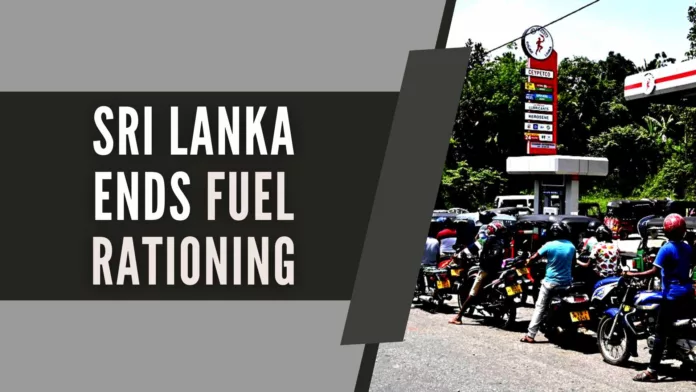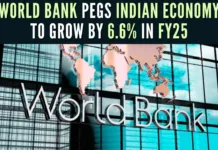
Fuel rationing ends in Sri Lanka as economy improves
Sri Lanka on Friday formally announced an end to the fuel rationing scheme imposed one year ago during the height of the unprecedented economic crisis. Hinting at the improvement in the economy, Energy Minister Kanchana Wijesekera said the QR-based fuel rationing system, imposed in August 2022, when Sri Lanka plunged into its worst economic crisis since 1948, would be discontinued from Friday. Under the rationing system, registered consumers at filling stations were guaranteed a weekly quota.
Sri Lanka announced its first-ever sovereign default in April 2022 and faced its worst economic crisis in history due to a shortage of foreign exchange reserves. The unprecedented forex shortages meant that the imports of fuel and essentials became harder, causing miles-long queues. More than 20 people died from exhaustion at fuel queues when the rationing began.
The QR-coded rationing system came into effect in August last year. It was priced to be an instant success, with queues disappearing with the demand dropping. The authorities then blamed stockpiling as the reason for long queues leading to an unscrupulous black market. Cash-strapped Sri Lanka was then solely dependent on Indian supplies of fuel through an Indian credit line. The Indian credit lines for fuel and essential imports provided relief to the public protesting against the government for its mishandling of the nation’s economy.
The forex crisis hampered the state oil entity Ceylon Petroleum Corporation‘s (CPC) ability to pay for oil imports. The Lankan subsidiary of the Indian Oil Corporation (IOC) was running continuous supplies as the pumps of the state fuel entity ran dry. Since then, the Sri Lankan government’s urgent reform measures in the power and energy sector saw the third player, Chinese Sinopec Oil, enter the retail market.
Sinopec coincidentally started its retail operations this week. In March, the International Monetary Fund extended a nearly USD 3 billion bailout facility to debt-ridden Sri Lanka to help stabilize the country’s economy after it was jolted by the devastating economic crisis last year.
PGurus is now on Telegram. Click here to join our channel and stay updated with all the latest news and views
For all the latest updates, download PGurus App.
- Supreme Court rejects plea to tally all VVPAT slips with EVM votes; says ‘no going back to paper ballot’ - April 26, 2024
- US report citing human rights violations is deeply biased: India - April 25, 2024
- Kotak Mahindra Bank shares tank 13%. Market Cap erodes by Rs.37,721 cr post-RBI action - April 25, 2024











[…] Source Link […]